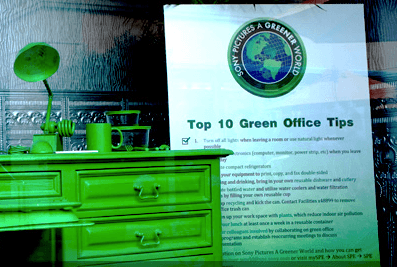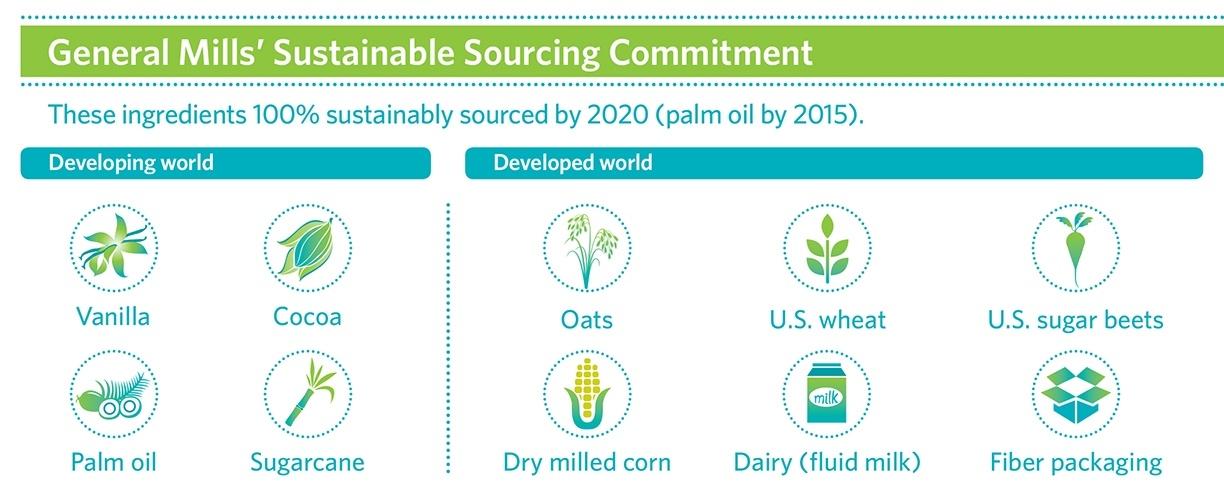U.S. Wind Energy Could Double, But It's Deja-vu All Over Again in Congress


Last year got off to a shaky start for the U.S. wind energy industry, but new project construction and installed generation capacity took off following belated Congressional extension of the federal renewable energy production tax credit (PTC). By year's end a record number of wind energy projects were under construction, and new wind energy generation records had been set across the country.
By the end of 2013, 46,100 wind turbines on 905 utility-scale wind farms with rated generation capacity of 61,110 megawatts (MW) were online, producing more than 4 percent of U.S. electricity generation, according to the American Wind Energy Association's (AWEA), “U.S. Wind Industry Annual Market Report 2013.”
Wind energy investment has been growing at a 19.5 percent annual rate over the past five years, with an average $15 billion per year invested in new projects. With costs dropping 43 percent between 2008 and 2012, wind energy is now providing clean, renewable electricity to the equivalent of 15.5 million U.S. homes across 39 states and Puerto Rico, and the U.S. economy and society is benefiting in numerous other ways.
Momentum is still very much dependent on the federal wind energy PTC, however. As Congress once again debates whether or not to extend the PTC, wind energy industry companies, their employees and suppliers can only watch, wait and make contingency plans.
Wind energy comes of age
U.S. wind energy growth and development has been remarkable over the past five years and more, notwithstanding successive boom-bust cycles – the result of the waxing and waning of the wind energy PTC.
Whether its building or operating wind farms or manufacturing, the wind energy industry is now present in all 50 U.S. states and Puerto Rico. In a surprisingly short period of time, wind energy has become the lowest cost means of producing electricity in a growing number of U.S. markets, accounting for 31 percent of new U.S. electric generation capacity over the past five years. As the AWEA points out:
“The 905 U.S. wind projects span 39 states while the 560 manufacturing facilities span 43 states. The majority of U.S. Congressional Districts, over 70 percent, have a wind project, a manufacturing facility or, both.”
Regionally, wind-generated electricity accounted for 60 percent of supply in the Pacific Northwest, Plains states and Midwest, and as much as 80 percent in the Upper Midwest between 2011 and 2013, the AWEA highlights. Wind energy was the largest source of new generation capacity across the U.S., with the exception of the Southeast and Mid-Atlantic regions.
Touting the industry's success, AWEA President Tom Kiernan stated:
“Increasingly, America is powered by wind energy. As utilities and Americans become more familiar with this affordable and reliable energy source, they want more of it. Our industry is responding with record construction numbers, more business for American factories, and more deployment of wind energy that has become a new cash crop for our farmers and ranchers.”
Then, of course, there are the social and environmental values and benefits associated with producing electricity with zero carbon and greenhouse gas emissions, essentially zero in the way of land, water and air pollution, and drastically lower water use as compared to fossil fuel alternatives. The AWEA highlights:
“Operational wind energy projects, combined with the projects under construction, will avoid 115 million tons of carbon dioxide emissions annually—more than 5 percent of U.S. power sector emissions—while avoiding the consumption of over 36 billion gallons of water each year, because wind turbines use virtually no water in operation.”
Realizing wind energy potential: A look ahead
Looking ahead, the AWEA highlights the boost anticipated as a result of growing investment to expand transmission capacity from wind energy facilities to demand centers.
“More than 10,000 MW of new transmission capacity was completed in 2013, and near-term projects could deliver another 60,000 MW of wind energy – allowing a doubling of the total amount of capacity installed today. These power lines result from years of work, which must continue if growth is to be sustained.”
Driven by ongoing technological advances, declining costs and the Jan. 2, 2013 extension of the wind energy PTC, last year's results were dramatic. Equally dramatic have been the effects of allowing the federal wind energy PTC to expire. That was clearly demonstrated yet again in late 2012, as the AWEA recounts in its news release:
“The supply chain had slowed down during the months preceding the threatened expiration. As a result of the slowdown and the months needed to region momentum, the industry saw a 92 percent drop in installations, down from a record 13,131 MW in 2012 to just 1,087 MW in 2013.”
The bust proved short-lived and was to be followed by a boom following Congress's Jan. 2 renewal. As 2013 drew to a close, a record 12,000 MW and 100 projects were under construction across the U.S.
Unfortunately, for the U.S. wind energy participants and society at large, the debate as to whether or not to renew the PTC for wind energy is playing out yet again this year.
Speaking for the industry, AWEA Kiernan said:
“In the last several years, and highlighted by the tremendous industry activity that ramped up in 2013, U.S. wind energy has shown what it can do for America. The time is now for Congress to give the industry a green light to keep contributing jobs and clean electrons to America, by providing a stable business environment for further investment.”
Boston Doctors Fight Obesity with Prescribe-a-Bike Program


A bike ride a day might in fact keep the doctor away. In a new move to help reduce obesity in low-income neighborhoods, doctors in Boston are writing bike share prescriptions as an alternative to traditional medication. The city’s bike share program, Hubway, runs at an $85 annual membership. Now, with doctor’s orders, lower-income riders can peddle their way to better health for only five bucks.
Behind the innovative model is the Boston Medical Center that partnered with Hubway to launch the program that will offer both low-cost rides and free helmets for qualifying participants. Surrounding medical centers are also looking at adopting the model in which a doctor would write a letter prescribing the program to interested participants.
Boston’s obesity rates mirror that of the nation’s current health crisis, where campaigns urging children and adults to get active become more ubiquitous each day. Last summer, New York City even rolled out a program that allowed doctors to prescribe fruits and vegetables to obese or overweight patients. In that program, patients receive cash in the form of Health Bucks for use at their local farmers market.
According to the Centers for Disease Control and Prevention (CDC), nearly one in four Boston residents is obese. These numbers are dismal for Black (32 percent) and Hispanic (30 percent) residents, who make up 40 percent of the population with obesity rates twice that of Caucasian adults.
"Obesity is a significant and growing health concern for our city, particularly among low-income Boston residents," explained Kate Walsh, chief executive of Boston Medical Center, to the Atlantic Cities. "Regular exercise is key to combating this trend, and Prescribe-a-Bike is one important way our caregivers can help patients get the exercise they need to be healthy."
A dismal 14 percent of Hubway bike share stations exist in low-income communities. Local officials are hoping to attract an additional 1,000 members to the bike share through the new program and thus increase dock stations where visibility is minimal.
To qualify for the subsidized program, participants must be 16 years or older, be enrolled in some form of public assistance or have a household income that does not exceed four times the poverty level. The required credit check is also waived for participants.
While cities like New York, Miami Beach, Denver, Minneapolis and Washington, D.C. boast bike share programs of their own, Boston’s subsidized model establishes precedent for a new trend that encourages cities to begin thinking strategically about equitable investment in lower income communities while encouraging actionable behavior that positively cuts down on congestion, air pollution and obesity-related diseases.
Image courtesy of Hubway Facebook Page
Annual 3p Readership Survey Results


We would like to take a moment to thank those of you who participated in our annual readership survey. Overall, we received a plethora of positive comments and thoughtful insights on what is both enjoyed and desired for the future.
Our insight into our audience demographics shows that our readers are a very diverse group; we are serving a range of thought leaders on sustainability topics across the public and private sectors. It's nearly a split between corporate executives, NGOs, and MBA and other students!
Feedback also shows us that you'd like to continue to see practical tips and opportunities to engage in education around sustainable business.
- TriplePundit routinely offers Global Reporting Initiative certified courses around the United States, taught in conjunction with ISOS Group. Enroll to become a certified CSR and sustainability reporter for your organization.
- We partner with MBA programs at colleges and universities to provide opportunities for guest blog writing and learning about the latest topics in sustainability news.
- Finally, TriplePundit and ISOS Group now bring you "Sustainability 101"! These courses are suitable for anyone interested in becoming familiar with popular tools and standards to help you report.
Would you like to share your insights with our readership? We frequently take guest editorials on topics such as clean tech, the living wage, women in leadership, employee engagement, social entrepreneurship, the sharing economy, and much more!
Finally, we would like to congratulate Dedee, Lucas, and David - the winners of our readership survey giveaway. Each of them won a $100 gift card to Indigenous, a sponsor of our current sustainable fashion series.
If you want another chance at an Indigenous gift card for $100 worth of fair trade and organic clothing for summer, you're in luck. Just tell us about your favorite certified B Corporation on social media for a chance to win a $100 gift card.
All posts must include include @triplepundit, as well as a link to this post and the hashtag #BtheChange. Here’s a sample post to get you started:
My favorite B Corp is XX because they put sustainability at the forefront! http://bit.ly/P9MO9X || @triplepundit @BCorporation #BtheChange
Find full details and contest rules here, and head to social media and share your thoughts. We’re excited to hear from you!
Is Environmental Entrepreneurship the Key to Solving Climate Change?


By David Levine
The United Nations recently issued a report that is finally putting the issue of climate change, and its impending effects, in the news. According to the body’s Intergovernmental Panel on Climate Change, if the current trajectory of increasing greenhouse gas emissions isn’t changed soon, the effects of global warming will “spiral out of control.”
The “spiral” will bring about more natural disasters, tighten global food supply and threaten the existence of millions upon millions of people, with a disproportionately high impact on the impoverished and indigenous populations. Furthermore, our flying, swimming, crawling and vegetative relatives will be unable to adapt and face even greater devastation.
There is a reason the climate report knocked Malaysian Airlines flight 370 off the headlines for one brief moment. As organisms, we are highly attuned to danger. We evolved by avoiding being eaten first, and then eating when we had leisure. So this should be a big wake-up call.
While fear is a good initial motivator, we need more than the threat of ecological and cultural collapse to begin the process of change and adaptation. We also need something to move toward. We need a vision and a rallying cry. We need a harmonizing framework that turns opposing forces into complementary pairs.
The key is environmental entrepreneurship, and we have some role models right in front of us. The old form of environmentalism was telling people what not to do. If you cut down trees, pollute streams or throw your trash out the car window, you’re being bad. The new form of environmental entrepreneurship is to give the consumer something so compelling; they adopt it without feeling like it’s a sacrifice.
Elon Musk proved with Tesla that electric cars don’t need to look like toasters that top out at 35 miles per hour. They can be quiet, luxurious, sleek and fast. They are also economical. Electric engines are significantly more efficient than internal combustion engines, so you can include the money you would have spent on gasoline as a discount on the purchase price. Jigar Shah accelerated the adoption of solar energy by offering cheaper electricity. Rather than selling solar panels and installation, he offered property owners a Power Purchase Agreement. The company he founded, SunEdison, installed, owned and maintained the equipment and then sold the electricity at lower rate than the conventional energy from the grid. Like Musk, Shah gave people something to move toward: more affordable energy. The fact that his customers could put the reduction in greenhouse gas emission in their annual report was simply gravy.
Entrepreneurship is never easy, and in this sector known as clean tech, it’s been brutal. A few years ago, my own company, Geostellar, was about to close an investment with a major venture capital firm when Solyndra suddenly dominated the news cycle. The venture capitalists determined the investment in our company was too risky because they didn’t know enough about the solar industry. In reality, the cheap Chinese solar modules that doomed Solyndra were a boon to our company. But investors are organisms, too. The impulse to flee danger overrides the drive to move toward rewards.
Another important positive for clean energy is that it creates jobs and improves the economy. While renewable energy is becoming less expensive than fossil fuels, it still employs more people to generate a megawatt of energy than conventional forms of power. According to Environmental Entrepreneurs, the clean technology industry added approximately 110,000 jobs in 2012 and 78,000 in 2013. The benefits of these jobs are spread throughout communities, with companies hiring sales, engineering, construction, maintenance, operations, development and finance positions across the country. Unlike the boom and bust hiring of oil, coal and natural gas, these opportunities will spawn local entrepreneurship, and the jobs will stay in the community for generations.
One of the major impediments to a clean energy economy is a deep schism between government and business. Business organizations such as the Chamber of Commerce often talk about “job killing regulations” and challenge the authority of the EPA to regulate greenhouse gas emissions. The fact is, a move from fossil fuels to renewables, and inefficient production and supply chains to economical and environmentally sound processes, would lead beyond an economic recovery to an economic boon. The ramp-up in production fighting climate change would eclipse the mobilization of industry we saw in World War II that created the prosperity of the 1950s and 1960s.
It is only the entrenched interests of aging industrial infrastructure, and their allies in government, that are preventing this mass flourishing and making the destruction of our planet a near inevitability. Tesla and SunEdison were able to succeed on an uneven playing field, where the destructive carbon emissions have not yet been priced into the cost of gasoline or the electric grid. Imagine what wonderful transformation could be accomplished if we employed true-cost economics, where the cost to the planet was accounted for in the price to the consumer. A carbon tax is probably the simplest method to achieve this. Additionally, tax credits, rebates and other incentives for renewable energy need to be established long term. The uncertainty created by the expiration of wind and solar tax credits keep investments in those industries on the sidelines.
States and municipalities that have actively supported clean energy through progressive policies are seeing economic benefits. The old arguments that clean energy is too expensive, or that the creaky electrical grid can’t support it, are simply the desperate rhetoric of industrialists trying to wring every last cent out of their infrastructure for the benefit of shareholders, at the expense of the economy, the people and the planet. Similarly, the landline operators first fought against Internet technologies, then mobile phones, for as long as they could. But at some point, resistance was futile. We are starting to see the acceptance of true-cost economics in the ruling of an administrative judge for the Minnesota Public Utilities Commission in December 2013, which noted that when accounting for the cost of environmental pollution, solar is less expensive than natural gas, saving the state $33 million on that project alone.
Others will argue that the efforts of the United States are futile unless other countries step up to help combat this problem. Yet most countries across the world follow our lead in a host of different industries – look no further than the widespread adoption of Google, Facebook and Twitter. Simply put, if we take the lead in combating climate change, many other countries will follow.
Over the next few decades, the effects of climate change will make the news in fits and starts. A disaster here, a freak weather event there. Scientists have put all of this together in a clear and disturbing picture, as something we should truly be afraid of and move away from. Fortunately, environmental entrepreneurs are also showing us the world we can move toward. This world is one of plentiful resources, enlightened policy and economic rewards for all.
Image courtesy of Oxfam International
David Levine is a serial entrepreneur and the chief executive of Geostellar, America's first and largest online solar marketplace connecting consumers with accessible opportunities to go solar.
Sustainability and Employee Engagement: Don't Forget the Fun


By Ben Egan
Sustainability is a concept that is supported by 97 percent of top executives, according to a U.N./Accenture CEO study. CEOs like the cost savings that result from sustainability programs because they are immediately measurable. However, there are bottom line benefits that which are more subtle but no less profound.
Chief among these is the impact on employee engagement. In his book "Talent, Transformation and the Triple Bottom Line," Andrew Savitz lays out how companies with sustainability engagement programs see an increase in employee engagement.
If this is the case, where are all the sustainability programs?
The truth is that it can be difficult to get employees to engage with them. Described below are three successful programs that draw on basic human psychology to achieve their goals.
Gamify your program
It’s become apparent that most of us will adapt our behavior in response to non-financial rewards. These rewards need not be tangible – fun is the key factor. This approach has been commercialized by the computer games industry where it’s common practice to encourage continued play by awarding players with badges and titles and through peer recognition.
Most of us are familiar with the way that game apps like Angry Birds or Flappy Birds award stars or medals depending on how well players complete levels. Players respond to receiving a single star or a bronze medal by replaying the level, seeking to improve their reward. Harnessing gamification can greatly increase employee engagement by motivating employees to make small behavioral changes.
Sony Pictures harnessed gamification as part of its green workplace certification. Employees are rewarded for a range of behaviors from using the energy-saving settings on their computers to getting rid of their own rubbish bin in favor of facilities that separate recyclable material. Their reward includes a series of badges that escalate from seed through leaf and tree to forest.
Sony’s pilot resulted in an average savings of $85 per participant with a cost of $20. The company estimates that the full-scale program could lead to savings of some $300,000. Program leader Eric Johnson says, “Packaging it in a way that is approachable, scalable and most of all fun encourages people to 'own' the actions they choose to take on."
Scoreboards also motivate people to persist to improve their performance by increasing the kudos of high-performing participants. When TD Bank launched The Green Pledge, it encouraged a spirit of friendly competition by creating visual dashboards that let branches compare their performance. One year after launch, almost half the company had committed to reducing their CO2 and paper usage.
Make sustainability a performance measure
The challenge facing all internal initiatives is that they compete with the ‘day job’ – the activities that are measured and rewarded. To introduce a sustainability initiative as an add-on is to consign it to the bottom of task lists.
After noticing that employees were not engaging with the sustainability agenda, Campbell Soup Co. devised a novel approach. A central part is asking in the appraisal form for evidence of activities that employees have undertaken to advance the company’s culture -- including corporate social responsibility (CSR) and sustainability.
Campbell Soup VP Dave Stangis gives examples of activities that employees could include in their appraisal form: “Making sure that their workgroup volunteers 20 percent more in their local community with one of our non-profit partners than they did last year … or working on integrating a healthier ingredient into a product next year.”
The key to success is bringing sustainability into individual’s daily objectives. This sets an expectation that sustainability will be measured and forms part of performance appraisal.
Tailoring the program
Businesses determined to increase employee engagement and deliver their sustainability agendas can employ these and other techniques. As the examples above illustrate, leaders will need to tailor each program to the circumstances of their employees. What is encouraging is how universal the human psychology is that drives behavior.
Image courtesy of Sony Pictures - A Greener World
Ben Egan is a consultant working for UK-based HR consultancy ETS https://www.etsplc.com/. ETS are experts in employee engagement, assessment and development working with companies including Vodafone, PepsiCo and RBS.
Bacardi Makes Energy Efficiency Upgrades to Its Rum Facility in Puerto Rico


Bacardi Ltd. is a world famous maker of rum, but the company is becoming known for something else: its sustainability measures. After highlighting significant reductions in water and energy use in its 2013 corporate social responsibility (CSR) report, Bacardi recently announced new energy efficiency measures.
These measures include installing solar skylights, which increase natural light, and ceiling insulation, which helps control temperatures in the company’s warehouses where rum sits inside white oak barrels to process. The company is located in Puerto Rico, a “small Caribbean island with limited resources,” as Julio Torruella, project director for Bacardi in Puerto Rico, said in a statement. Because of the company’s location it continues to look for ways it can get the best use out of the natural resources of the island. Installing skylights is one way that Bacardi can maximize its use of sunlight, the company said.
Bacardi has already reduced energy use by 25 percent since it began tracking its global impacts on the environment in 2006. In addition, the company has reduced greenhouse gas emissions from rum production by 48 percent. One way Bacardi reduces energy use of non-renewable sources and reduces GHG emissions is through the use of renewable energy. Bacardi’s distillery in Catano, Puerto Rico is partly powered by two wind turbines that generate a combined total of 500 kilowatts (kW).
Earlier this year, Bacardi rolled out its “Good Spirited” global sustainability initiative, coinciding with the 152nd anniversary of the company’s founding. Launched in more than 150 markets, the initiative includes over 75 offices and 27 manufacturing and bottling facilities. The initiative has three main goals:
- Obtain all raw materials and packaging from sustainable sources or renewable and recyclable materials. By 2017, the company wants 40 percent of its sugarcane-derived products to come from certified and sustainable sources, and 100 percent by 2022.
- Use eco-design to make sustainability a part of its brand packaging and point-of-sale materials. By 2017, Bacardi wants to reduce packaging weight by 10 percent, and 15 percent by 2022.
- Reduce water use by 55 percent and GHG emissions by 50 percent by 2017, as well as eliminate landfill waste at all of its production sites by 2022.
Other recent announcements show that Bacardi is committed to sustainability. In March, the company announced that it will start recycling the water it uses to rinse out the oak barrels where rum is aged. The company estimates that by reusing the rinse water, it will recycle about 15,000 gallons of water a day -- enough water for the daily needs of 40 families of four. The old oak barrels themselves are recycled. They are ground into woodchips and used as mulch for landscaping at the rum distillery in Puerto Rico.
Since 2006, Bacardi has reduced global water use by 54 percent. The water saved is equivalent to 10.3 million people showering.
Image credit: Debraj Ghosh
Pennsylvania Shale Gas Report Finds Little to Complain About


Pennsylvania’s Department of Conservation and Natural Resources this month released its first report that describes efforts to “track, detect and report” on the impacts of gas development on the state’s forest lands.
The 265-page “Shale-Gas Monitoring Report” is just that: a comprehensive and carefully worded document about the results of the monitoring that the state has conducted since 2011, while avoiding the use of the term hydraulic fracturing, or "fracking," almost entirely. It’s “shale-gas development,” not fracking here, and there’s a raft of “key findings and points,” but no conclusions.
"People may have different perspectives on how monitoring is defined, but they want to know that staff is on the ground observing and managing gas development activity that is occurring in our state forests," explained Ellen Ferretti, secretary of DCNR.
"The intent of the report is to present information in as objective a manner as possible. Oftentimes trends or effects are not evident for years or decades. Despite that, there are some findings that can be gleaned from this initial report," Acting Deputy Secretary for Parks and Forestry Dan Devlin added.
Overall, approximately 1.5 million acres of state forest are underlain by Marcellus Shale, according to the report. Of that acreage, 44 percent (673,000 acres) is available for gas development either through bureau-issued leases (386,000 acres) or severed lands development (287,000 acres). “Modern shale-gas leases restrict surface disturbance in sensitive areas and limit overall surface disturbance to approximately 2 percent of the acreage within the lease tract,” the report reads. About 15 percent of all shale gas produced in Pennsylvania comes from state forest lands.
Some findings from the report include:
- Initial water monitoring results “have not identified any significant impacts due to shale-gas development. This is based on one round of field chemistry sampling throughout the shale-gas region and over a year of operation for 10 continuous monitoring devices in key watersheds. At this early stage, the data collected are primarily for establishing baseline conditions.”
- “Approximately 1,486 acres of state forest has been converted through 2012 to facilitate gas development; a number that is lower as a result of a management decision to place this activity within or adjacent to existing infrastructure or existing disturbances where it is more noticeable to the public, but requires less forest disturbance."
- Short-term air sampling at several locations around the state “has detected natural gas constituents and associated compounds in the vicinity of shale-gas operations. These compounds were not detected at concentrations that would likely cause health-related impacts, although some were detected at levels which would produce an odor.”
- “Invasive species are a concern as areas of disturbance tend to create conditions conducive to invasion of unwanted plant species or pests. The report clearly shows that invasive species need to be carefully managed and controlled. DCNR leases require that companies address invasive species.”
Perhaps all one really needs to know about this report are findings related to revenue:
- The pre-shale-gas period of oil and gas activity provided a total income to the state of approximately $153.6 million. The shale-gas period (through 2012, for the purposes of the report) has provided $582.3 million in revenue. The combined total of all revenue from the oil and gas lease program from 1947 to the end of 2012 has been approximately $735.9 million.
- The influx of shale-gas production revenue began in 2009 when most of the wells that had been first proposed in 2007, 2008 and early 2009 were drilled and connected to the pipeline system and gas was delivered to the market.
- Royalty income is just beginning to come to DCNR from the hundreds of new shale-gas wells on state forest land.
- Steady revenue growth from gas extraction is expected to continue for the next decade as the full development of the leases comes to a conclusion.
While “surface disturbance” appears small and it’s a relatively small amount of forest land at issue, the revenue potential is significant.
Fracking is a controversial topic, but the state’s report avoids any controversy in the spirit of objectivity and information, which for some may make it controversial, or ignorable. It is described as “snapshot in time,” and while the report’s findings are not catastrophic, neither are they benign. But how useful is it and how much clarity does it provide? Perhaps the next snapshot will be clearer.
Image: Courtesy of Martha Rial in the DCNR Shale-Gas Monitoring Report
Tell Us About Your Favorite B Corp for a Chance to Win $100 at Indigenous


With a busy week behind you and the weekend within reach, there’s no shame in taking things a bit easy on Friday afternoon. With this in mind, every Friday TriplePundit will give you a fun, easy read on a topic you care about. So, take a break from those endless email threads, and spend five minutes catching up on the latest trends in sustainability and business.
According to the nonprofit B Lab, “B Corp certification is to sustainable business what Fair Trade certification is to coffee or USDA Organic certification is to milk.”
We at Triple Pundit received our B Corporation status last month — joining more than 950 other forward-thinking companies across all industries that are are well known for their positive impacts on both people and planet.
Now, we want to hear from you. What's your favorite B Corp? Tell us about it on social media for a chance to win a $100 gift card to Indigenous.
The community of Certified B Corporations has grown from just over 600 companies in 2012 to 990 today — hailing from 60 industries and 32 countries unified by one common goal: to redefine success in business. Top names include Patagonia, Method and Klean Kanteen, but the B Corp community also includes loads of smaller companies that are committed to social and environmental responsibility - including Triple Pundit.
B Lab makes it easy to find a B Corp by industry and location so you can support companies that share your values. Have a favorite? Tell us about it on social media for a chance to win!
Here's how it works
All you have to do to enter the giveaway is tell us about your favorite B Corp on Twitter, Facebook or Google+. All posts must include include @triplepundit, as well as a link to this post and the hashtag #BtheChange.
If you're posting on Facebook or Google+, feel free to tell us a bit more about why this B Corp is your favorite. On Twitter, just tell us whatever you can fit into 140 characters. Here's a sample post to get you started:
My favorite B Corp is XX because they put sustainability at the forefront! http://bit.ly/P9MO9X || @triplepundit @BCorporation #BtheChange
The rules
You must be following Triple Pundit on Twitter, Facebook and Google+ to be eligible to win the $100 gift card to Indigenous. Your post must also include @triplepundit, a link to this article and #BtheChange. A winner will be selected next week.
Ready to get started? Head to social media and share your thoughts. We're excited to hear from you!
Images courtesy of B Lab and Indigenous
Based in Philadelphia, Mary Mazzoni is an editor at TriplePundit. She is also a freelance journalist who frequently writes about sustainability, corporate social responsibility and clean tech. Her work has appeared on the Huffington Post, Sustainable Brands, Earth911 and The Daily Meal. You can follow her on Twitter @mary_mazzoni.
Is Pop-Up Retail the Solution for Sustainable Fashion?


“I would buy more sustainable clothing, but…” Sound familiar? Even in the middle of the green bubble that is San Francisco, we at TriplePundit hear this phrase all too often, usually followed by a series of hurdles including accessibility, price, information and lack of variety in clothing styles.
Over the past two months, TriplePundit’s sustainable fashion media channel has uncovered emerging solutions to each of these obstacles. While we’re encouraged to see that large mainstream brands are at last moving in a more responsible direction, it has been the smaller pioneers who have conceived of the products and models that are revolutionizing the industry.
Companies like NAU, Threads4Thought and Patagonia offer diverse product lines appealing to a variety of consumer preferences. Websites such as Modavanti and apps like Orange Harp enable people to make responsible purchasing decisions at the tap of a button or touch screen. Brands like OSMIUM and Appalatch have cracked the nut toward selling clothing made in the USA at reasonable prices. Indigenous’ Fair Trace tool tells the story behind each of its products by connecting the consumer to individual artisans with the simple scan of a QR code.
Unfortunately, most consumers are not yet familiar with these breakthroughs, and so, continue to shop as they always have. At the same time, more consumers every year report that they are willing to shop more responsibly (and even pay a bit more), if given the opportunity. In a world where most closets are filled with the likes of mainstream “fast fashion,” there is a cavernous gap between these reports and actual behavior. This begs the question: What do consumers mean by “opportunity”?
In this era of online shopping, it’s easy to assume that physical retail is fading toward the obsolete. Yet, according to a recent poll conducted by HuffPost, 32 percent of respondents never shop online and a full 54 percent only shop online once a year or less. Popular reports indicate that as much as 90 percent of retail sales still occur in-store. This means that by relying upon online sales exclusively, sustainable fashion could be missing out on up to 90 percent of its potential market
The in-store experience is especially critical for lesser known, sustainable brands whose value is often tied to story. “Store touch is still the pinnacle of customer interaction,” explains Mark Spera, owner of BeGood, a socially responsible and eco-friendly retail shop in San Francisco. “Until a customer feels the clothing, gets used to the fit and quality of the garment, and hears its story, small brands are at a significant disadvantage.” Even the most prominent inherent e-commerce brands like Warby Parker and Bonobos have recently transitioned to creative omni-channel retail models to increase conversion rates and consumer awareness.
Traditional brick and mortar requires deep pockets, but there are alternatives for small fashion brands and designers. A pop-up shop presents the affordable and convenient option of a temporary offline retail channel. Plus, the pop-up demonstrates a natural value alignment for the sustainable business, who can make use of the estimated 10 percent commercial real estate vacancy rate. What’s more, according to Indochino CEO Kyle Vucko, it just might offer the best possible opportunity for engaging more deeply with the consumer: “Pop-up retail is something we have committed to doing because it’s the best way to create a wicked retail experience.”
Ushering the pop-up into mainstream retail is Storefront – a company that has removed the roadblocks of traditional brick and mortar and opened the gateway to the temporary, yet elegant, retail experience. “We streamline the search, payment and insurance, which make opening an offline store as easy an online one,” explains CEO Erik Eliason.
Since opening it’s first-ever pop-up to sell sustainable clothing, candles and art in downtown SF’s Westfield Shopping Centre in December of 2012, Storefront has provided retail space for more than 1,000 merchants in New York City and San Francisco. The results, according to Storefront Co-founder Tristan Pollock, are nothing short of game-changing: "Pop-ups create more vibrant communities while delivering a new revenue stream back to the brand. For every dollar spent on retail space, $7 goes back to the business.” Armed with an ambitious vision for growth and fresh backing of some very impressive venture capitalists, Storefront has already announced its launch in Los Angeles and is turning its sights to a city near you.
Could the arrival of Storefront's pop-up represent the long-awaited opportunity to bridge the gap between small brand and conscious consumer?
Image Credit: Charisse Kenion/Unsplash
General Mills Issues Its 2014 Global Responsibility Report


General Mills just issued its 2014 Global Responsibility Report. I received an advanced review copy and spoke with Chief Sustainability Officer Jerry Lynch to get his perspective. The 121-page report is organized into five major sections: Health, Environment, Sourcing, Workplace and Community. These are consistent with the company's mission of “Nourishing Lives- making lives healthier, easier and richer – for 147 years.”
Triple Pundit: One statement in the introduction really impressed me. “Our business depends on the availability of natural resources and the strength of the communities where we operate.” This neatly sums up the reason why companies should care about and invest in corporate social responsibility and sustainability. It's the awareness that companies do not exist in a vacuum, and that in fact all of their inputs (raw materials) and outputs (sales) are in constant interaction with ecosystems that are subject to continuous change and are sensitive to factors that they themselves can have a significant impact upon.
Jerry Lynch: Thank you.We take the output of Mother Nature, then add value to it for our consumers. So if the front end of that business model breaks down, we're in a world of hurt. The focus of our work is to conserve and protect our natural resources and the communities that our business depends on. So it's really a hard-nose business imperative behind this.
3p: What do you see as your major challenges in achieving this?
JL: We're looking at increasing demand for food as population grows and more people are moving into the middle class. This is happening at a time when Mother Nature is facing major challenges.
3p: What efforts to address your impact would you like to highlight?
JL: The two areas we spent a lot of time on were sourcing and water. We also describe in detail our enterprise-wide footprint, which looks at the whole value chain. When we look at our business, we find that two-thirds of our carbon footprint and 99 percent of our water footprint is in the raw materials.
But raw materials also happen to be our biggest single spend as a company. That means that there is a lot of impact that we can address and a lot of value that we can recover. So it's really an innovation challenge for us to unlock value, quality, cost savings etc., while also reducing our impact.
3p: I see that you’ve committed to 100 percent sustainable sourcing of your 10 key raw materials. How do you define sustainable sourcing?
JL: It depends on which ingredient we are talking about. Each ingredient is geographically unique, with unique challenges. We’ve been working with WWF and a number of other groups including Field to Market (also known as the Alliance for Sustainable Agriculture) and Bonsucro as well as nongovernmental organizations (NGOs) like the Nature Conservancy (TNC), Rainforest Alliance and the international humanitarian organization CARE to develop those criteria.
[Note: These 10 key ingredients represent a full 50 percent of General Mills’ raw material purchases.]
3p: So how does this work?
JL: The strategy is based on creating economic, environmental and social value. Each ingredient goes through a four-phase process. The phases are: Assessment, Strategy formation, Transformation, and Monitoring & Evaluation. All 10 are currently in the transformation phase, except for sugar cane which is in strategy formation.
3p: Can you give me an example?
JL: Most of our vanilla comes from Madagascar. There the primary challenge is social. The small holder farmers are not making enough money. That leaves them open to temptation to knock down the rainforest to grow crops like rice. We are working with vanilla supplier Virginia Dare, the international humanitarian organization CARE and Madagascar-based NGO Fanamby to improve farmer incomes. They are training these farmers to cure the vanilla beans, which provide them with additional income. We’re also supporting research at [the University of California at Davis] mapping the vanilla genome and are now analyzing the vanilla plant’s responses to environmental stress, such as heat and drought, defenses against pathogens, and traits that determine fruit quality and aroma.
3p: Great. So let’s talk about water.
JL: We work with a team of PhD hydrologists from the Nature Conservancy. Together, we are assessing 75 key watersheds either where we have a production facility or a key sourcing area, or in some cases, both. We develop a strategy. We engage with other key players, including other corporations, NGOs and government agencies. Together we develop a watershed stewardship plan.
3p: Some examples?
JL: In Irapuato, Mexico, where we grow many of our Green Giant vegetables, we have completed a watershed analysis and are now working on a strategy to improve it. In China, we are assessing the Yangtze River watershed, and here in the U.S., we are conducting a detailed review of the Snake River in Idaho, which is an area where we grow a lot of wheat.
[Note: In the report the company assesses the water risk level for a number of these watersheds.]
3p: You mention the Field to Market framework. What criteria do they provide and who are some of the other participants in the consortium?
JL: Field to Market is a very broad coalition that includes all of the stakeholders involved in food production. Farmers, distributors, seed companies, manufacturers, retailers, as well as a number of environmental groups.
3p: I see there are a number of bio-technology companies involved. You recently announced that Cheerios would soon be GMO-free. What is your position on GMOs, and is it evolving? What is the value that you feel they provide to you as a manufacturer?
[Note: Credo Mobilize has organized a petition asking General Mills to remove GMOs from all of its products. As of this writing,125,000 people had signed it.]
JL: We’re faced with the challenge of feeding another 2 to 3 billion consumers, with many moving into the middle class. Our projections show that we will need 50 percent more food, 45 percent more energy and 20 percent more water by 2050. Biotech is an important tool. The sources we rely on tell us they are safe. With it, farmers need less energy (fewer passes over the fields), emit lower GHG emissions, use less chemicals, resulting in better water quality, better nitrogen retention, etc.
So there’s a number of potential benefits there that we think are an important part of this work to get more for less in agriculture. Even the [World Health Organization] has talked abut the important potential they provide towards agricultural productivity and improved nutrition. But we’re also a consumer products company, and we recognize that there are some consumers that are concerned about GMOs and are uncomfortable with them. That’s why we provide GMO-free options. We have a large organic business, including Cascadian Farms and Muir Glen, among others
3p: Do you specify to your growers, what varieties, etc., they should grow?
JL: Quite often we buy from a supplier who adds some value by refining the raw material, so we generally don’t deal directly with farmers. Usually we can’t even trace the origins. By the time we get the refined product, there’s no way that you can trace, because the protein that marks biotechnology has been taken out of the process.
In some cases, like with vegetables, we do contract directly with farmers, but that’s not the biggest part of our business. So we’re really not doing specification, except for our organic businesses, when it comes to this.
3p: What do you specify, then?
JL: What we’re specifying, typically, is food safety, first and foremost. Next comes nutrition and product quality attributes, and then finally, there would be the functional attributes in the production system (like a rising characteristic in a dough-based product). So that’s how those relationships work at this point in time.
3p: Looking at the reporting section of the report, I see you’re falling short on energy savings. Your goal was to reduce consumption by 20 percent by next year, and so far, you’ve only reduced consumption by 10 percent since 2005. What went wrong there, and what are your plans to recover?
JL: A lot of that has to do with product mix. Recently we’ve been selling a lot more baked goods, like muffins, instead of the mixes. As you can imagine, it takes far more energy to make muffins than muffin mix because we have to do the baking. Our energy team has been auditing the cereal production operation, which is the most energy intensive product from a production standpoint.
We’ve installed more meters, optimized dryer efficiency, updated our boilers, and improved efficiency of lighting, HVAC, refrigeration and pumps. That yielded a 6 percent improvement, close to 60 million kWh ... So we are working hard on this, keeping in mind that our production facilities represent only about 8 percent of our total carbon footprint.
3p: Interesting. I’m thinking that if you look at this from a system perspective, someone has to bake those muffins, and you can probably bake them a lot more efficiently than your customers can, because you bake in large batches. Maybe you need to think about how you are reporting these numbers, since you’re penalized for something that could actually save energy.
JL: That’s a good idea, thank you.
3p: Despite the fact that you’re a bit off-target on energy, you are actually on-target with GHG emissions. So that means that when you further improve energy, GHG should get even better.
JL: Yes, the goals were set back in 2005, and they are beginning to diverge. Acquisitions outside the U.S. have helped us on the GHG front. Yoki, in Brazil, which has biomass energy, uses peanut shells to fuel production. Here at home, in our Cheerios operation, oat hulls are fed into a biomass burner. This creates 90 percent of the steam required. Excess energy is sold to an energy company.
You know, the company started with hydropower in Minneapolis at St.Anthony’s Falls, where Gold Medal Flour was first made.
3p: Speaking of water, it seems like the acquisition of Yoplait has been a challenge in that regard.
JL: The reasons we’re down 22 percent is because these are rate-based goals. We’ve always been a licensee of Yoplait in the U.S. Eighteen months ago, we purchased the remaining global sales. When we added their water intensity into the mix, that took us backwards. This is a water intensive business, and we see an opportunity there for a reduction [of] 11 percent against our 20 percent goal.
3p: Going back to your involvement in collaborative efforts, like Field to Market: I see that some of the participants are direct competitors, like Kellogg and Unilever. Talk to me about that.
JL: That’s simple. All this work is pre-competitive. It has to be. We’re trying to make enormous changes and none of us is big enough to move the market alone.
--
Join Triple Pundit for a Twitter chat with General Mills and CSRwire on April 23 at 12 p.m. PST/3 p.m. EST. Jerry Lynch, as well as General Mills Sourcing Director Steve Peterson, will be on hand to answer questions on sustainable sourcing.
To register, just send out the following tweet: I’ll join @gmills_jerry @CSRwire & @triplepundit to discuss what it takes 2 reach 100% #susty sourcing http://bit.ly/GenMillsSusty #GenMillsSusty
Image courtesy of General Mills
RP Siegel, PE, is an inventor, consultant and author. He writes for numerous publications including Justmeans, ThomasNet, Huffington Post, and Energy Viewpoints. He co-wrote the eco-thriller Vapor Trails, the first in a series covering the human side of various sustainability issues including energy, food, and water in an exciting and entertaining romp that is currently being adapted for the big screen. Now available on Kindle.
Follow RP Siegel on Twitter.